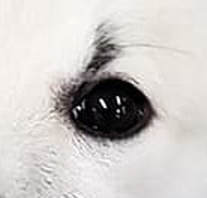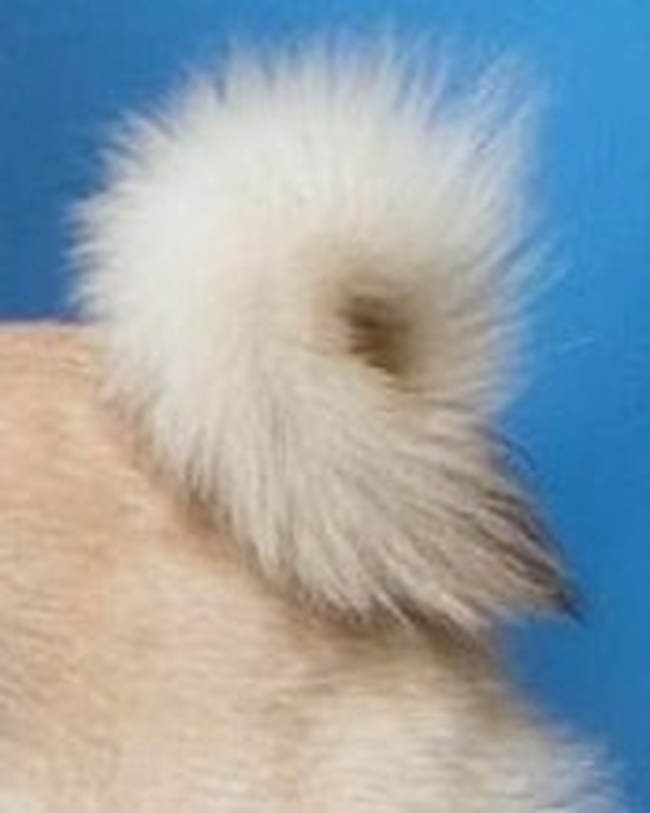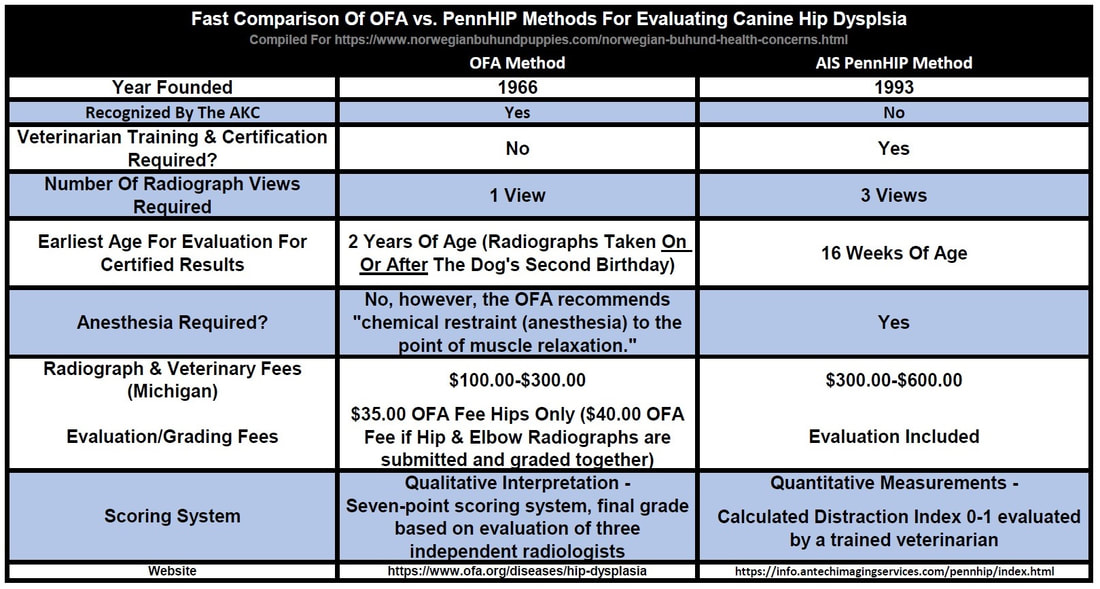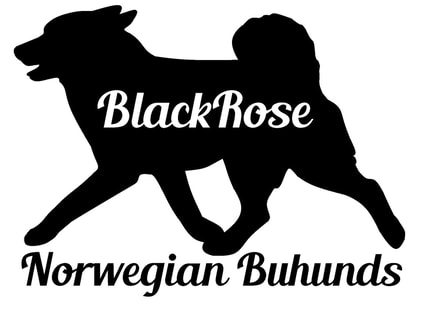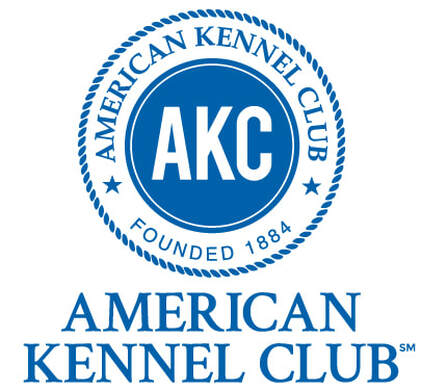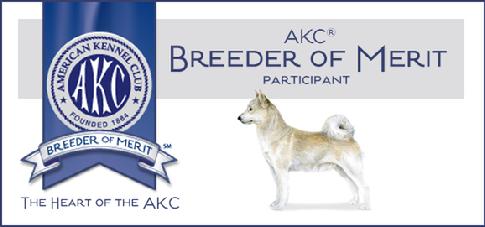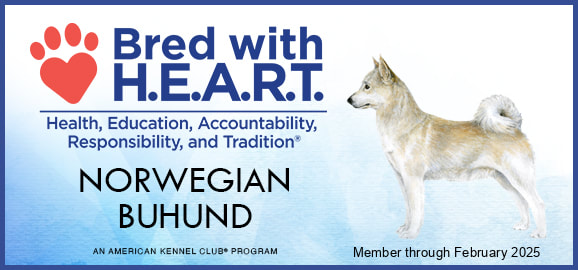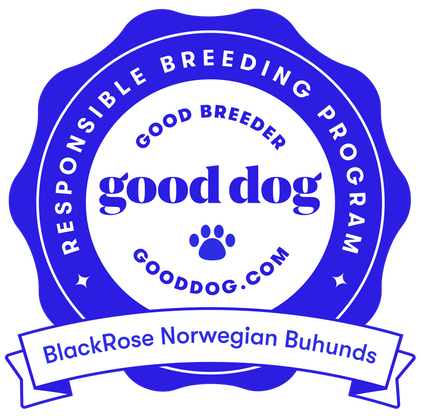Health Conditions In The Norwegian Buhund
|
Inherited Eye Diseases
The main concern with regards to Norwegian Buhund health is their propensity for inherited eye diseases such as cataracts. It is important that your breeder has their breeding stock evaluated for eye diseases by a Veterinary Ophthalmologist, beginning at 2 years of age (or younger if they choose) and continuing yearly until they are at a minimum of 6 years old (after which eye diseases such as cataracts are considered normal and a part of aging). RECENT STUDY: Cataracts in the Norwegian Buhund-current prevalence and characteristics. Vet Ophthalmol. 2017 Sep;20(5):460-467. doi: 10.1111/vop.12449. Epub 2017 Jan 3. CONCLUSIONS: The high prevalence of PNC in the breed reported 20 years ago persists. PNCs are not always visible in young dogs, and the rate of progression varies. The prevalence of other types of cataract is also high, but cataracts rarely cause loss of vision in this breed. © 2017 American College of Veterinary Ophthalmologists. WEBLINK: https://www.ncbi.nlm.nih.gov/pubmed/28044393 |
|
Hip Dysplasia
Hip Dysplasia is an abnormal skeletal condition in which the ball and socket joint of the hips fails to develop properly which results in rubbing and grinding instead of the joint sliding smoothly. Over time, this results in deterioration and loss of function of the joint. There are various grades of dysplasia. Some dogs may have very mild or borderline hips and show little to no symptoms. While others may have severe hip dysplasia and may have pain and other symptoms. Severe dysplasia often requires surgery and other medical interventions with the most common surgeries being Double or triple pelvic osteotomy (DPO/TPO), Femoral head ostectomy (FHO) and Total hip replacement (THR) surgeries. The owner may opt for humane euthanization of the animal instead. |
How prevalent is Hip Dysplasia in Norwegian Buhunds in North America?
First one must know about the two most common methods for evaluating hip joints in dogs.
The Orthopedic Foundation for Animals (OFA) Method
The Orthopedic Foundation for Animals (OFA) is the more well-known and "AKC Accepted" option - AKC Accepted meaning that passing results will show up on AKC pedigrees.
The OFA relies on qualitative interpretations of a single radiograph of the dogs hips using the OFA seven-point hip joint scoring system. The radiograph is independently evaluated by three randomly selected, board-certified veterinary radiologists from a pool of 20 to 25 consulting radiologists throughout the USA. The dog's hips are scored Excellent, Good, Fair, Borderline (unclear), Mild, Moderate, or Severe based on these three interpretations.
Examples would be:
There are approximately 9 different anatomic areas of the hip that are evaluated.
As of December 2017, 252 radiographs had been submitted to the Orthopedic Foundation for Animals (OFA) for evaluation, here were the results:
90.1% - "Normal" (OFA Excellent, Good, Fair)
9.1% - "Abnormal" (OFA Mild, Moderate, Severe)
0.8% - "Equivocal" (OFA Borderline which means "Not clear. Usually more incongruency present than what occurs in a fair but there are no arthritic changes present that definitively diagnose the hip joint being dysplastic.")
Even if all the Norwegian Buhunds whose results came back as "Equivocal" did turn out to have dysplasia, this means that less than 10.0% of all buhunds have some level of hip dysplasia when evaluated by the OFA using the OFA's methods.
The AIS PennHIP Method
The second most common method of evaluating dogs for hip dysplasia in North America is the PennHIP method currently being provided by Antech Imaging Services.
Comparing the two methods
First one must know about the two most common methods for evaluating hip joints in dogs.
The Orthopedic Foundation for Animals (OFA) Method
The Orthopedic Foundation for Animals (OFA) is the more well-known and "AKC Accepted" option - AKC Accepted meaning that passing results will show up on AKC pedigrees.
The OFA relies on qualitative interpretations of a single radiograph of the dogs hips using the OFA seven-point hip joint scoring system. The radiograph is independently evaluated by three randomly selected, board-certified veterinary radiologists from a pool of 20 to 25 consulting radiologists throughout the USA. The dog's hips are scored Excellent, Good, Fair, Borderline (unclear), Mild, Moderate, or Severe based on these three interpretations.
Examples would be:
- Two radiologists reported Excellent, one Good—the final grade would be Excellent
- One radiologist reported Excellent, one Good, one Fair—the final grade would be Good
- One radiologist reported Fair, two radiologists reported Mild—the final grade would be Mild
There are approximately 9 different anatomic areas of the hip that are evaluated.
- Craniolateral acetabular rim
- Cranial acetabular margin
- Femoral head (hip ball)
- Fovea capitis (normal flattened area on hip ball)
- Acetabular notch
- Caudal acetabular rim
- Dorsal acetabular margin
- Junction of femoral head and neck
- Trochanteric fossa
As of December 2017, 252 radiographs had been submitted to the Orthopedic Foundation for Animals (OFA) for evaluation, here were the results:
90.1% - "Normal" (OFA Excellent, Good, Fair)
9.1% - "Abnormal" (OFA Mild, Moderate, Severe)
0.8% - "Equivocal" (OFA Borderline which means "Not clear. Usually more incongruency present than what occurs in a fair but there are no arthritic changes present that definitively diagnose the hip joint being dysplastic.")
Even if all the Norwegian Buhunds whose results came back as "Equivocal" did turn out to have dysplasia, this means that less than 10.0% of all buhunds have some level of hip dysplasia when evaluated by the OFA using the OFA's methods.
The AIS PennHIP Method
The second most common method of evaluating dogs for hip dysplasia in North America is the PennHIP method currently being provided by Antech Imaging Services.
Comparing the two methods
Hereditary Cerebellar Ataxia (HCA)
While not known to be a concern of Norwegian Buhunds in the United States, Hereditary Cerebellar Ataxia (HCA) is of concern in the United Kingdom.
Hereditary Cerebellar Ataxia can affect dogs as young as 12 weeks of age who will present with symptoms of uncoordinated movement and head tremors. HCA is progressive and will worsen with time. There is currently no effective treatment for this condition and affected animals are often euthanized based on welfare concerns.
Researchers at The Kennel Club Genetics Centre at the Animal Health Trust (AHT) have identified a recessive mutation causing Hereditary Cerebellar Ataxia in the Norwegian Buhund. A dog must inherit two copies of the mutation, one from each parent, to be clinically affected by Cerebellar Ataxia.
A DNA test will be available from the AHT DNA testing service beginning Monday, December 4, 2017.
The DNA test for Cerebellar Ataxia identifies if a dog is clear, a carrier, or is affected.
CLEAR: These dogs have two copies of the normal gene and will not develop Cerebellar Ataxia as a result of the Cerebellar Ataxia mutation being tested for, although the AHT cannot exclude the possibility that they might develop a similar condition due to other causes or the effect of other unidentified mutations.
CARRIER: These dogs have one copy of the mutation and one normal copy of DNA. These dogs will not develop Cerebellar Ataxia themselves as a result of the Cerebellar Ataxia mutation but they will pass the mutation on to approximately 50% of their offspring.
AFFECTED: These dogs have two copies of the Cerebellar Ataxia mutation and will have Cerebellar Ataxia caused by this mutation.
This DNA test allows breeders to avoid producing litters affected by this disease by ensuring that one of the breeding pair is clear of this mutation.
While not known to be a concern of Norwegian Buhunds in the United States, Hereditary Cerebellar Ataxia (HCA) is of concern in the United Kingdom.
Hereditary Cerebellar Ataxia can affect dogs as young as 12 weeks of age who will present with symptoms of uncoordinated movement and head tremors. HCA is progressive and will worsen with time. There is currently no effective treatment for this condition and affected animals are often euthanized based on welfare concerns.
Researchers at The Kennel Club Genetics Centre at the Animal Health Trust (AHT) have identified a recessive mutation causing Hereditary Cerebellar Ataxia in the Norwegian Buhund. A dog must inherit two copies of the mutation, one from each parent, to be clinically affected by Cerebellar Ataxia.
A DNA test will be available from the AHT DNA testing service beginning Monday, December 4, 2017.
The DNA test for Cerebellar Ataxia identifies if a dog is clear, a carrier, or is affected.
CLEAR: These dogs have two copies of the normal gene and will not develop Cerebellar Ataxia as a result of the Cerebellar Ataxia mutation being tested for, although the AHT cannot exclude the possibility that they might develop a similar condition due to other causes or the effect of other unidentified mutations.
CARRIER: These dogs have one copy of the mutation and one normal copy of DNA. These dogs will not develop Cerebellar Ataxia themselves as a result of the Cerebellar Ataxia mutation but they will pass the mutation on to approximately 50% of their offspring.
AFFECTED: These dogs have two copies of the Cerebellar Ataxia mutation and will have Cerebellar Ataxia caused by this mutation.
This DNA test allows breeders to avoid producing litters affected by this disease by ensuring that one of the breeding pair is clear of this mutation.

